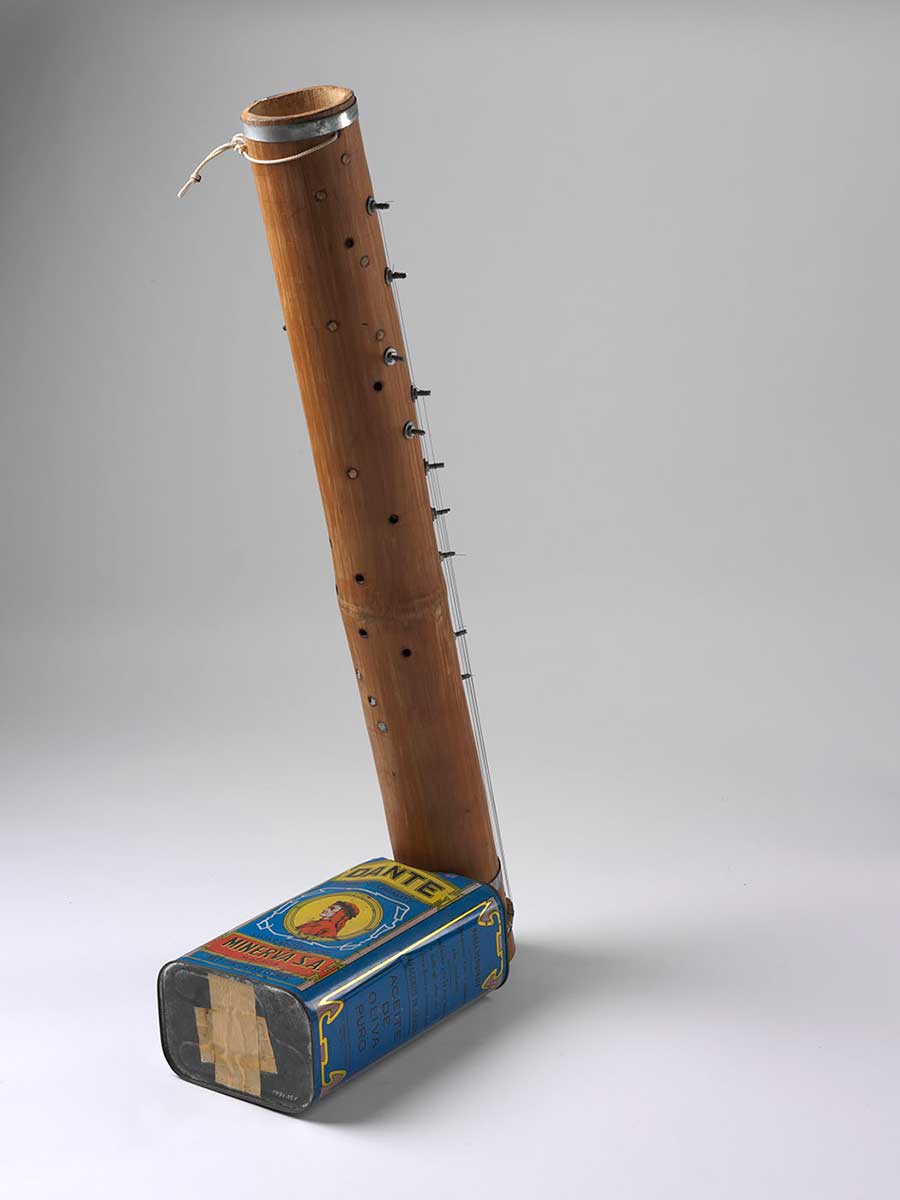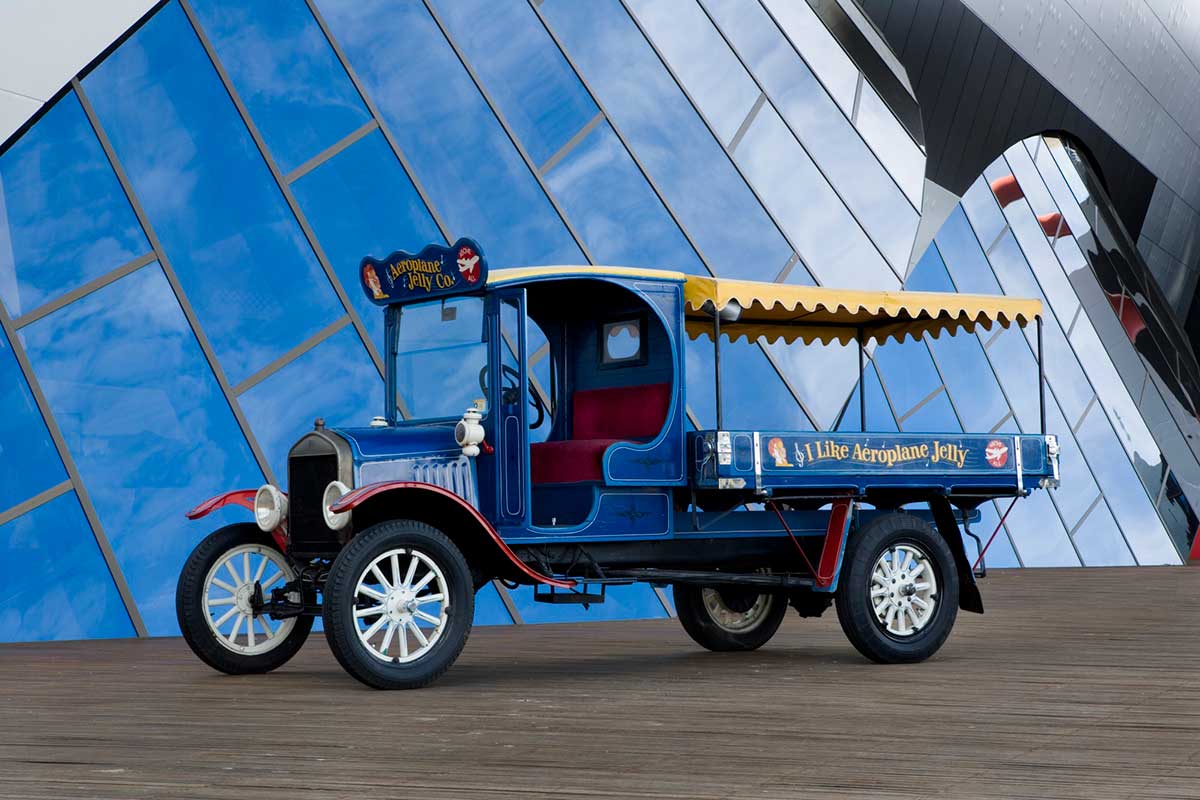Australia has a rich and various musical history. From the jolly Aeroplane Jelly jingle to the popular Play School TV show theme song, ‘There’s a Bear in There’, we have used music to express ourselves and our way of life.
Instruments like the đàn tre and didjeridu also speak to larger themes in Australian history, like migration, ingenuity and connection to Country. This week we’re taking a look at some of our favourite musical objects from the Museum’s collection.
Aeroplane Jelly Model-T Ford truck
Aeroplane Jelly began in 1927 after Sydney tram driver Bert Appleroth had success selling jelly crystals made in his bathtub. His small backyard operation evolved into one of Australia’s largest family-operated food manufacturers.
Few advertising jingles in Australia are as widely known or as enduring as the Aeroplane Jelly song, penned by Albert Lenertz in 1930.
From 1978 to 1988 a Ford Model-T was used to promote Aeroplane Jelly, and the Museum holds this vehicle in its collection.
Emblazoned with logos and loudly broadcasting the Aeroplane Jelly jingle, it was a popular sight at food fairs and other promotional events throughout the 1980s.
Ðàn tre musical instrument

The đàn tre is a bamboo instrument invented by Vietnamese refugee Minh Tam Nguyen. Inspired by both European and Asian musical traditions, the đàn tre was created in a refugee camp in the Philippines after Nguyen fled Vietnam.
The instrument accompanied Nguyen when he moved to Australia in 1982. It is based on an earlier instrument that he had invented in 1976 while a prisoner-of-war in the ‘re-education’ camps of the People’s Liberation Armed Forces, or Vietcong, in central Vietnam.
It combines features from Vietnamese bamboo zithers and Western instruments like the guitar. It features 23 wire strings attached to a bamboo tube, with an old olive oil tin as a resonator at the base.
Garden of Dreams
In 2009 the Museum commissioned Garden of Dreams, a work for orchestra and didjeridu from the composer Elena Kats-Chernin. Kats-Chernin is a renowned pianist and composer whose work featured at the opening of the 2000 Sydney Olympic Games.
Garden of Dreams features an Indigenous Australian didjeridu in concert with a European orchestra. The 20-minute work was inspired by the Museum’s collection, themes and architecture.
At the heart of the Museum is the Garden of Australian Dreams, a symbolic landscape exploring ideas of place and country. Kats-Chernin drew upon the Garden to influence her composition.
You can listen to a small part of the composition inspired by the convict love tokens held in the Museum’s collection, via our audio on demand.
13 May 2010
Love tokens performance and talk with Elena Kats-Chernin
We’ll keep bringing objects, collections, exhibitions and programs from the vault as part of the Museum from Home experience. Stay tuned!
In our collection

